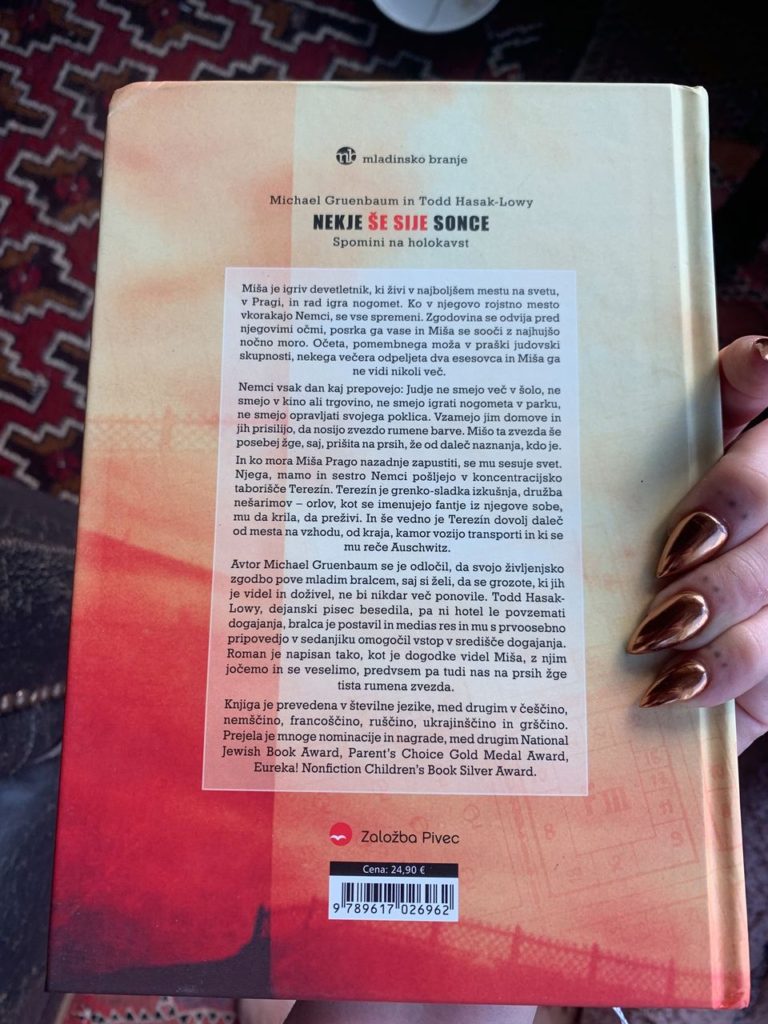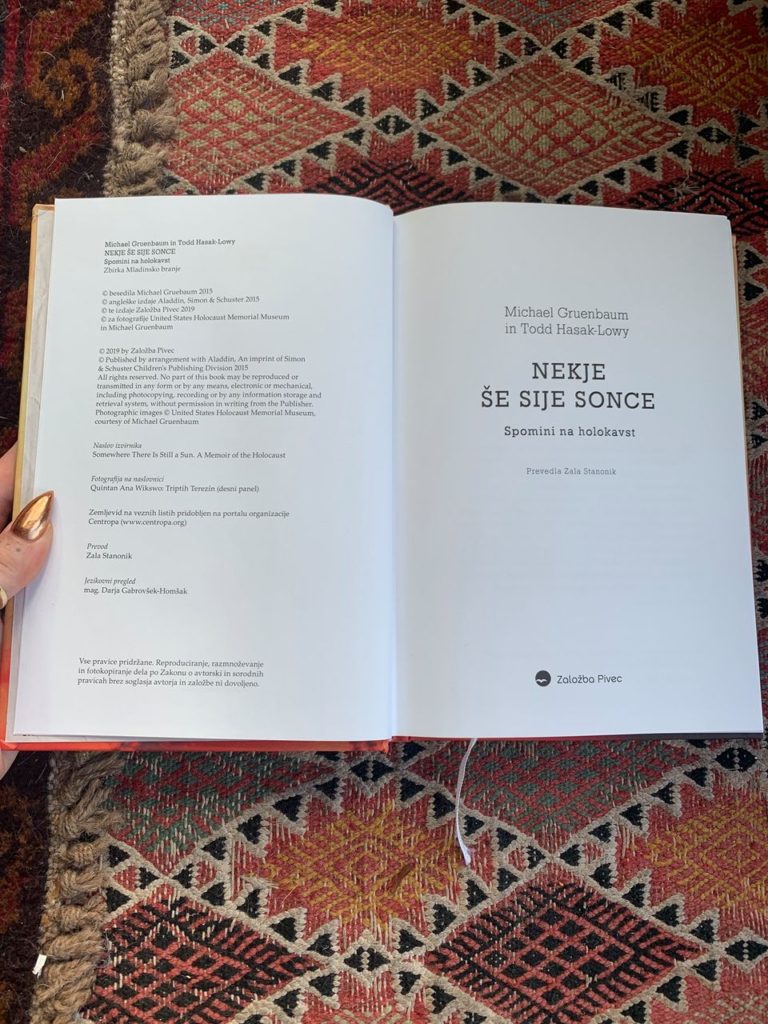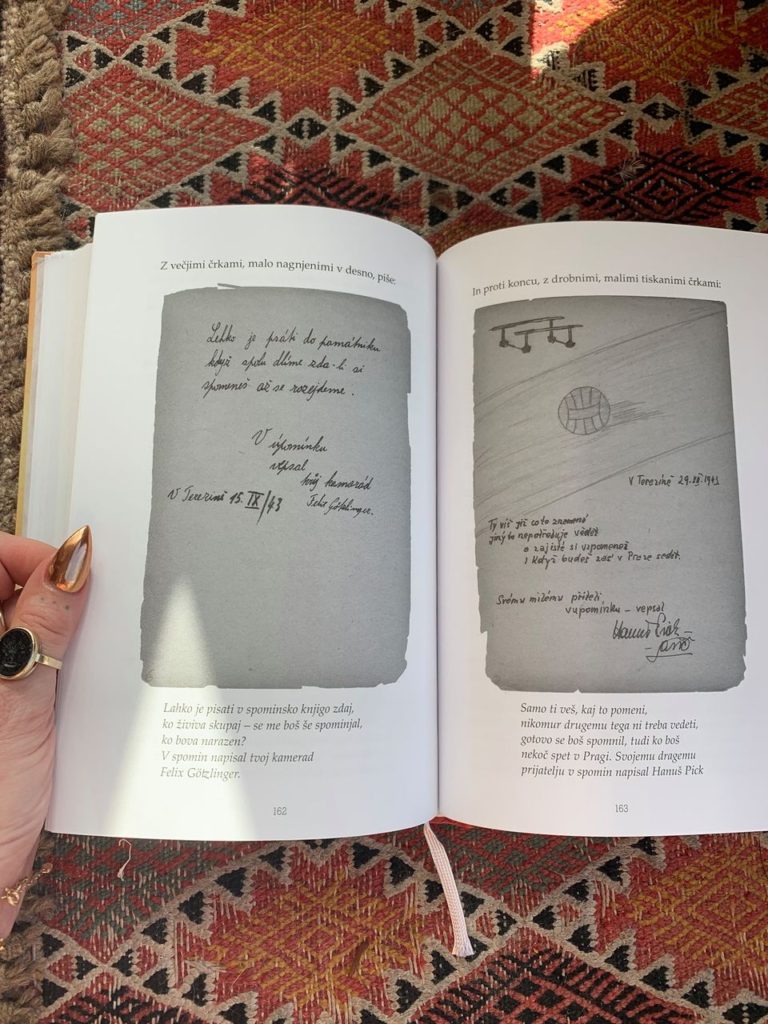January 28, 2020
I’m humbled that my triptych of photographs of Terezin/Teresienstadt Death Camp was chosen by survivor and acclaimed author/activist Michael Gruenbaum, Založba Pivec and Simon and Schuster for the cover of Gruenbaum’s Young Adult memoir, Nekje Sê Siju Sonce,/Michael of Nesarim: Child Survivors of Terezin – written for children imprisoned in concentration camps in all nations.
My series of work TEREZIN can be viewed on my website. I created TEREZIN / THERESIENSTADT at the site in the current Czech Republic where the Nazi SS and Gestapo imprisoned, tortured and murdered hundreds of thousands of people. The concentration camp served a unique purpose as the primary torture, transport, and execution facility for Europe’s leading artists and intellectuals (who were also, of course, Jewish). Artists, writers, scientists, scholars, composers, and intellectuals were gathered there for a sadistic display of Nazi cultural cleansing. Today, the 18th century Bohemian fortress and garrison requires visitors to pay an admission fee – except for the swallows, who have set up an intricate community of nests and perches in the torture chambers and crematorium.
In 2010, Theresienstadt bore the visible bruises of a sadistic human brutality that to me, felt permanent. The human prisoners have all been murdered and their bodies removed, in one way or another, yet their grief and pain continue in visible, enduring scars on the earth itself. I walked through the site at the height of summer, and nonetheless the tall grasses and flowers fell back from the massive gouges in the earthwork embankment at the execution range – craters from bullets that murdered thousands. Standing in the torture rooms – where the youngest victim had been a four year old boy – tiny birds have built mud-daubed nests on the bars and hinges and upper corners. Their nests are likewise affixed to the labrythine gas pipes of the crematorium. Their brown and white waste trails down the walls and into the ovens in a smear of sludge. In the hot afternoon of August, their wings fluttered against the walls as they dove towards the bodies of insects trapped behind the broken glass.
Michael Gruenbaum was born in 1930 in Prague, Czechoslovakia. In 1942, he was sent to the concentration camp Theresienstadt, or Terezin, with his mother and sister, and remained there until the end of the war. He emigrated to the United States in 1950, graduated from MIT and Yale, served two years in the Army, and worked for the Boston Redevelopment Authority and Mass. Dept. of Public Works, before cofounding a consulting firm. He was married for fifty years to the late Thelma Gruenbaum, author with Michael of Nesarim: Child Survivors of Terezin. He has three sons and four grandchildren.
Michael is working for all children, as he is a child survivor. If you are interested, read my project statement that called him to my work of photographing the swallows’ nests in the crematorium at the Nazi-era death camp.




Miša je igriv devetletnik, ki živi v najboljšem mestu na svetu, v Pragi, in rad igra nogomet. Ko v njegovo rojstno mesto vkorakajo Nemci, se vse spremeni. Zgodovina se odvija pred njegovimi očmi, posrka ga vase in Miša se sooči z najhujšo nočno moro. Očeta, pomembnega moža v praški judovski skupnosti, nekega večera odpeljeta dva esesovca in Miša ga ne vidi nikoli več.
Nemci vsak dan kaj prepovejo: Judje ne smejo več v šolo, ne smejo v kino ali trgovino, ne smejo igrati nogometa v parku, ne smejo opravljati svojega poklica. Vzamejo jim domove in jih prisilijo, da nosijo zvezdo rumene barve. Mišo ta zvezda še posebej žge, saj, prišita na prsih, že od daleč naznanja, kdo je.
In ko mora Miša Prago nazadnje zapustiti, se mu sesuje svet. Njega, mamo in sestro Nemci pošljejo v koncentracijsko taborišče Terezín. Terezín je grenko-sladka izkušnja, družba nešarimov – orlov, kot se imenujejo fantje iz njegove sobe, mu da krila, da preživi. In še vedno je Terezín dovolj daleč od mesta na vzhodu, od kraja, kamor vozijo transporti in ki se mu reče Auschwitz.
Avtor Michael Gruenbaum se je odločil, da svojo življenjsko zgodbo pove mladim bralcem, saj si želi, da se grozote, ki jih je videl in doživel, ne bi nikdar več ponovile. Todd Hasak-Lowy, dejanski pisec besedila, pa ni hotel le povzemati dogajanja, bralca je postavil in medias res in mu s prvoosebno pripovedjo v sedanjiku omogočil vstop v središče dogajanja. Roman je napisan tako, kot je dogodke videl Miša, z njim jočemo in se veselimo, predvsem pa tudi nas na prsih žge tista rumena zvezda.
Knjiga je prevedena v številne jezike, med drugim v češčino, nemščino, francoščino, ruščino, ukrajinščino in grščino. Prejela je mnoge nominacije in nagrade, med drugim National Jewish Book Award, Parent’s Choice Gold Medal Award, Eureka! Nonfiction Children’s Book Silver Award.
